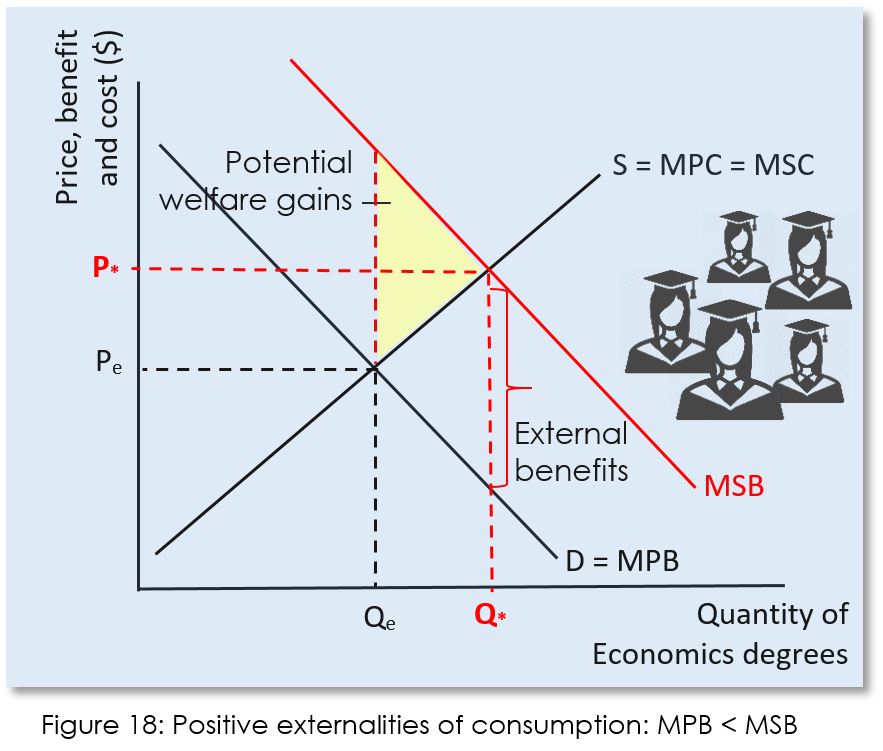
To give an example, we can revisit your neighbor. Negative consumption externalities are negative effects that arise during the consumption of a good or service. In this example, the optimal price of the good (p2) is higher than its actual market price (p1). As a result, the market equilibrium (E*) is different from the optimal market situation (O*) and there is an oversupply of harmful behavior. The social cost curve (SC) in this case, however, is higher than the individual supply curve (S) because of the external cost (EC) that is not included in the firm’s supply decision. Similar to the positive externality example, individual demand (D) represents social benefit (SB). To illustrate this, we shall compare the social cost and social benefit again. In this situation, both the farmer and the beekeeper benefit from each other, even though from an economic perspective, neither of them has considered the other one’s needs in their decision-making. An example of this could be an orchard placed next to a beehive. Positive production externalities are positive effects that originate during the production process of a good or service. As we learned above, they may be present in the form of production or consumption externalities. Positive ExternalitiesĮconomic activities that have positive effects on unrelated third parties are considered positive externalities. Additionally, there is another (and maybe less familiar) distinction which should be made here: Both positive and negative externalities can arise on the production or the consumption side. In the following paragraphs, we will look at the different types of externalities in more detail. The definition above already suggests that they can be either positive or negative.

There are different types of externalities. As a result, the social cost (or benefit) of these activities is different from their individual cost (or benefit), which results in a market failure. Because the causers are not directly affected by the externalities, they will not take them into account. Externalities are defined as the positive or negative consequences of economic activities on unrelated third parties.


 0 kommentar(er)
0 kommentar(er)
